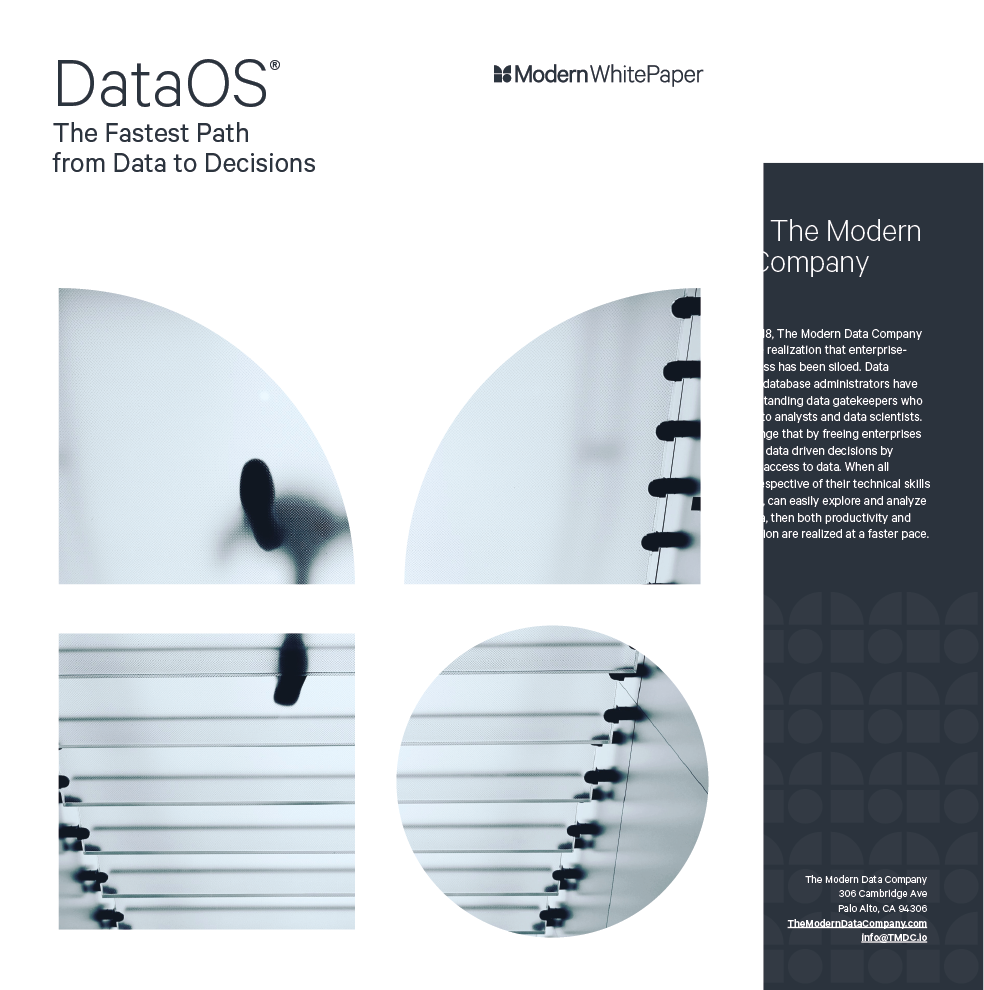
How to drive trusted decisions without changing your current data infrastructure.
Learn more about DataOS® in our white paper.
During the last two decades, technology has emerged as one of the central drivers of the global economy, as well as a key aspect of our social lives and lifestyles. And now it is becoming an essential element of the urban infrastructure.
It is a principle of all management that “you cannot manage what you do not measure,” and technology is certainly a brilliant tool for measuring the urban metabolism. With the technology of ubiquitous and inexpensive cameras and sensors it is now common to gather data about nearly all facets of a city, data that was for the most part previously unavailable.
Of course, as technology leads to exponentially more data, it also requires more powerful data management and analytic tools to make sense of the otherwise overwhelming quantity of data. Hence, we see a clear progression … from measurement to analysis, and then to action.
As all this can be modeled in advance. It naturally impacts on urban design just as it impacts on urban management, which makes it easy to see how important technology is and will continue to be to the city. For example, urban managers are now learning how to use “digital twins,” computer model simulations of their own cities. Urban designers can henceforth create a digital twin of a prospective city before the real one is built, enabling optimization of every factor in the complex city infrastructure – energy, transportation, water, food, and climate among them.
Not only has technology led to a massive profusion of data, it’s also enabled development of new data management tools and paradigms. While the goal for technology companies is generally to sell more technology, the goal for urban designers and managers is to make their cities better. This requires the transformation of data into something far more valuable, wisdom. Two of the great business writers of the 20th century, Peter Drucker and Russell Ackoff, articulated a model showing the stages of progressive value from data, transformed into information, and then from information to knowledge. But knowledge is not enough. We need something deeper – understanding – and then something deeper still – wisdom.
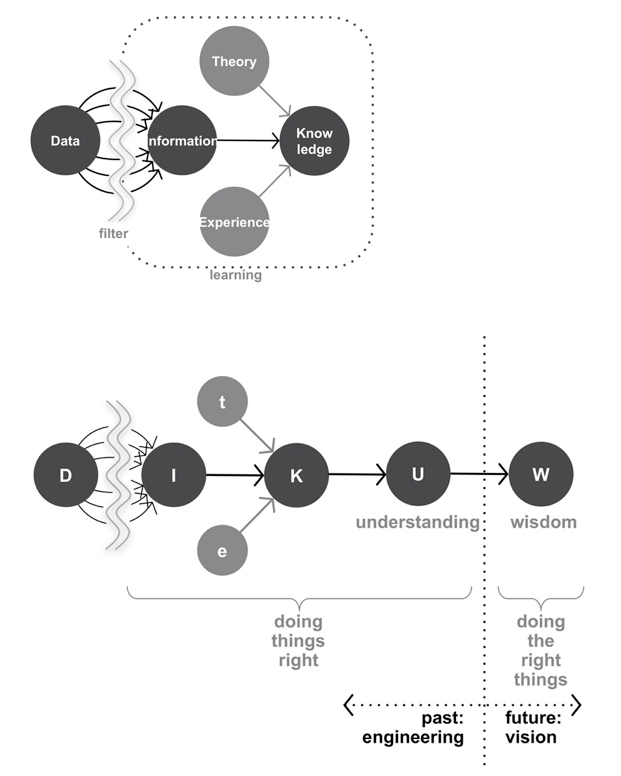
The model tells us that Data must be filtered to become useful as Information; and that Information becomes Knowledge only when fused with Experience of how the real world works, and Theory about how it ought to work. Understanding is the capacity to do things right, but Wisdom is the clarity to do the right things, and thus by far the most valuable of all five stages.
The essential questions for technologists are:
In summary with respect to cities, it’s clear that technology has become the essential partner and supporter of the urban infrastructure, and as the 2020s advance, we will surely see progressively more technology doing more monitoring and modeling of the city’s systems for delivery and management of energy, water, transportation, security, and climate. We have to assume, in fact, the technology will be fully embedded in every aspect of the urban infrastructure.
This will lead, as noted above, to unprecedented masses of data, and so getting value from the data becomes the essential task. It thus becomes necessary that when infrastructure technology is designed and installed, there must be in place already a vision for how the data will be transformed into value, the tools and techniques used for filtering, as otherwise the huge investments will be for naught.
Where, then, is the added value? It is precisely in the design of the filters, which are analytic tools and frameworks such as a robust Data Fabric model should provide. As raw wheat is fashioned into flour and then baked as bread, and as iron ore is purified and becomes steel, so must the profusion of data be transformed into something which has meaning, and which informs.
Contact us to find out how DataOS can transform how your company uses data.
Be the first to know about the latest insights from Modern.

The elegance of Data Products is undeniable, but many leaders question the efficacy of their data strategies: Why does the return on data investments often disappoint? Why is proving data's value becoming harder? Why do data models become more cumbersome than...

Data is vital to business but the process of getting from data to insights is often murky. Many on the business side may not even care how it happens but understanding this process matters. It matters a lot. With this in mind, let's explore how to demystify the...

We don't want to restrict the scope of this article to only data leaders and influential executives. As startup folks, we are confident in how individual contributors or ICs, such as Data Engineers, DevOps experts, or even the surprising intern, could influence the...

It's a tale as old as time. A startup manages to disrupt an entire industry only to find itself at a critical juncture a few years down the road. Data, the lifeblood of its operations, was becoming increasingly complex and unwieldy. With each new product launch and...

For today's Chief Data Officers (CDOs) and data teams, the struggle is real. We're drowning in data yet thirsting for actionable insights. Traditional data architectures, with their centralized data lakes and batch-oriented processing, are like bloated, slow-moving...
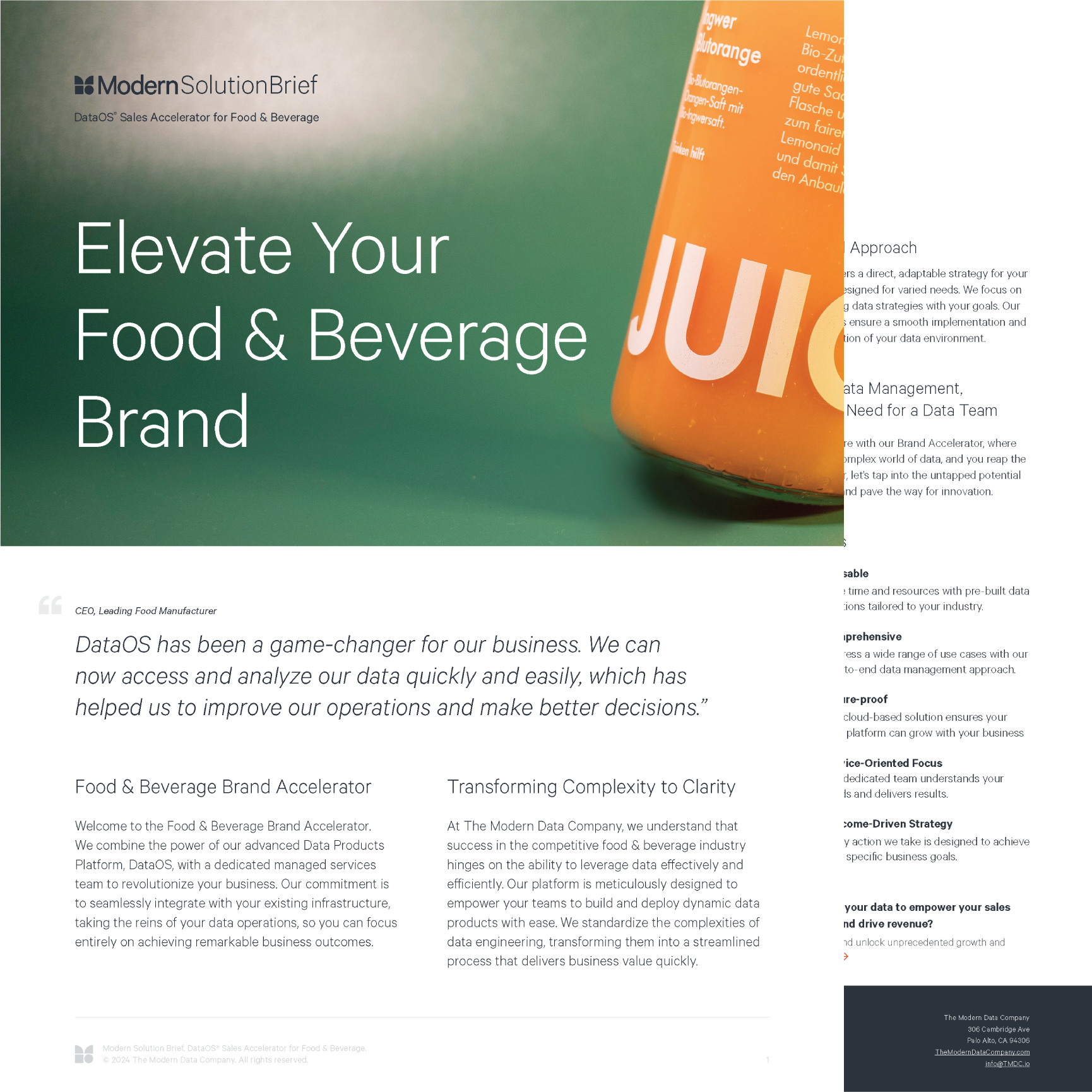
DataOS Sales Accelerator for Food & Beverage The dynamic food & beverage industry demands a data-driven approach to success. The Modern Data Company's DataOS® Sales Accelerator acts as your all-in-one data concierge. Our pre-built solutions, designed...
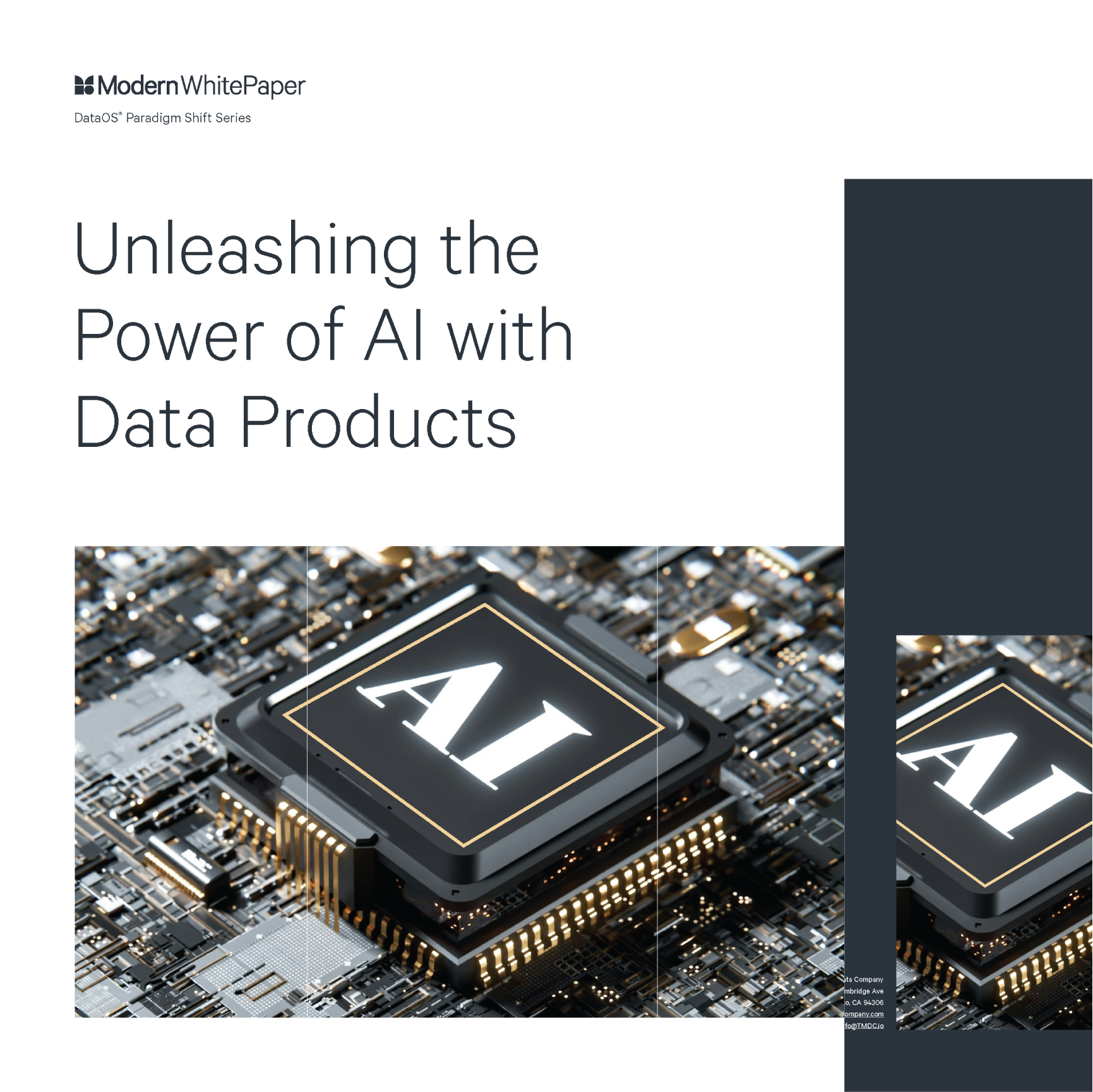
Unleashing the Power of AI with Data Products Traditional project-centric data management stifles AI innovation with siloed data, slow workflows, and limited reusability. Enter the era of data products: self-contained modules of data, logic, and infrastructure that...
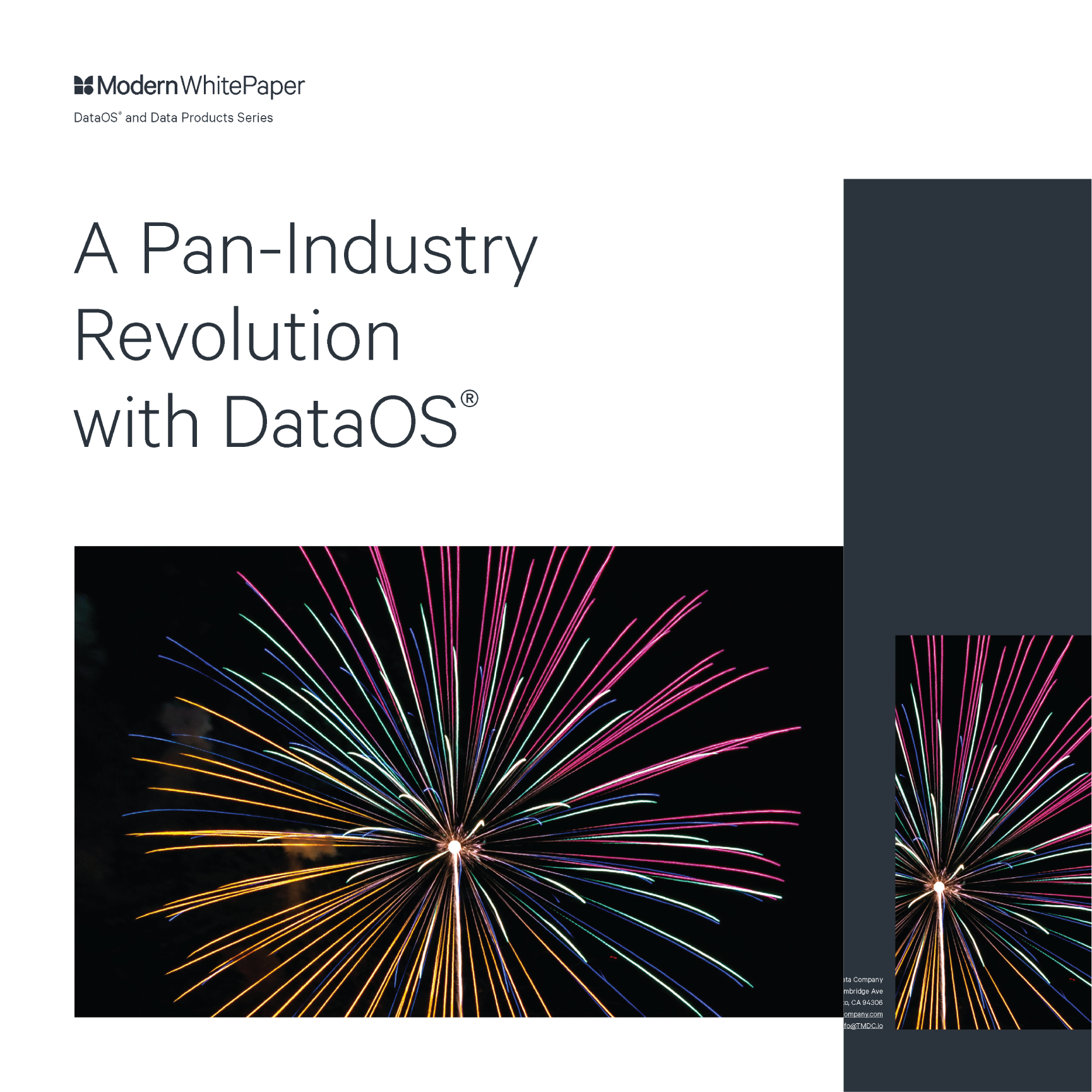
A Pan-Industry Revolution with DataOS® Unleash the revolution with Data Products powered by DataOS®. These self-contained data units, bursting with actionable insights, offer unmatched flexibility, agility, and compliance across all sectors. From personalized customer...

Cross-Sell Accelerator for Credit Cards In the hyper-competitive BFSI landscape, maximize credit card cross-sell potential with data-driven precision. Cross-Sell Accelerator empowers you to forge deeper customer connections with personalized offers, optimize...
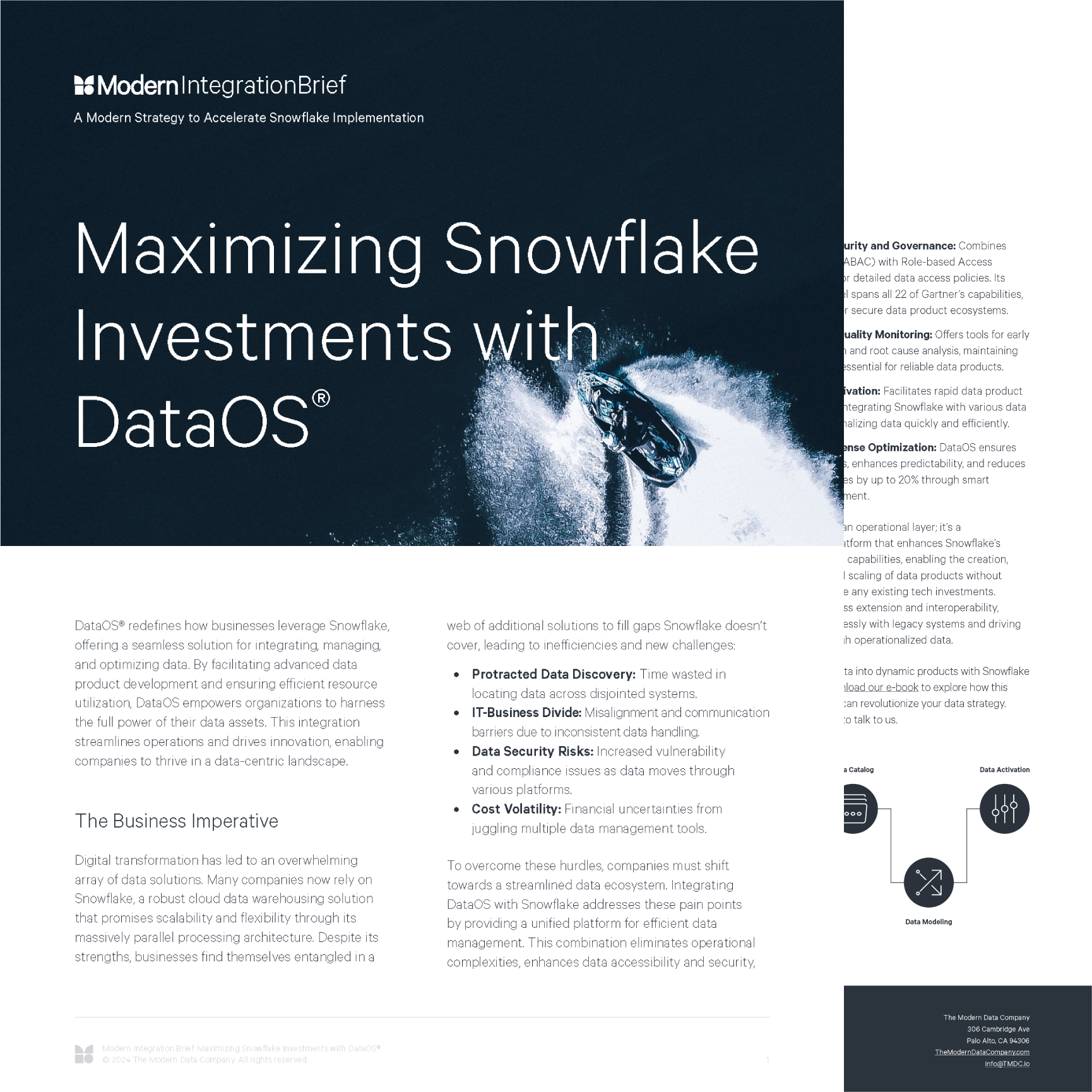
Maximizing Snowflake Investments with DataOSUnleash the true potential of your Snowflake investment with DataOS®, the data product platform that seamlessly integrates, empowers, and elevates your existing infrastructure. Build robust data products faster, eliminate...